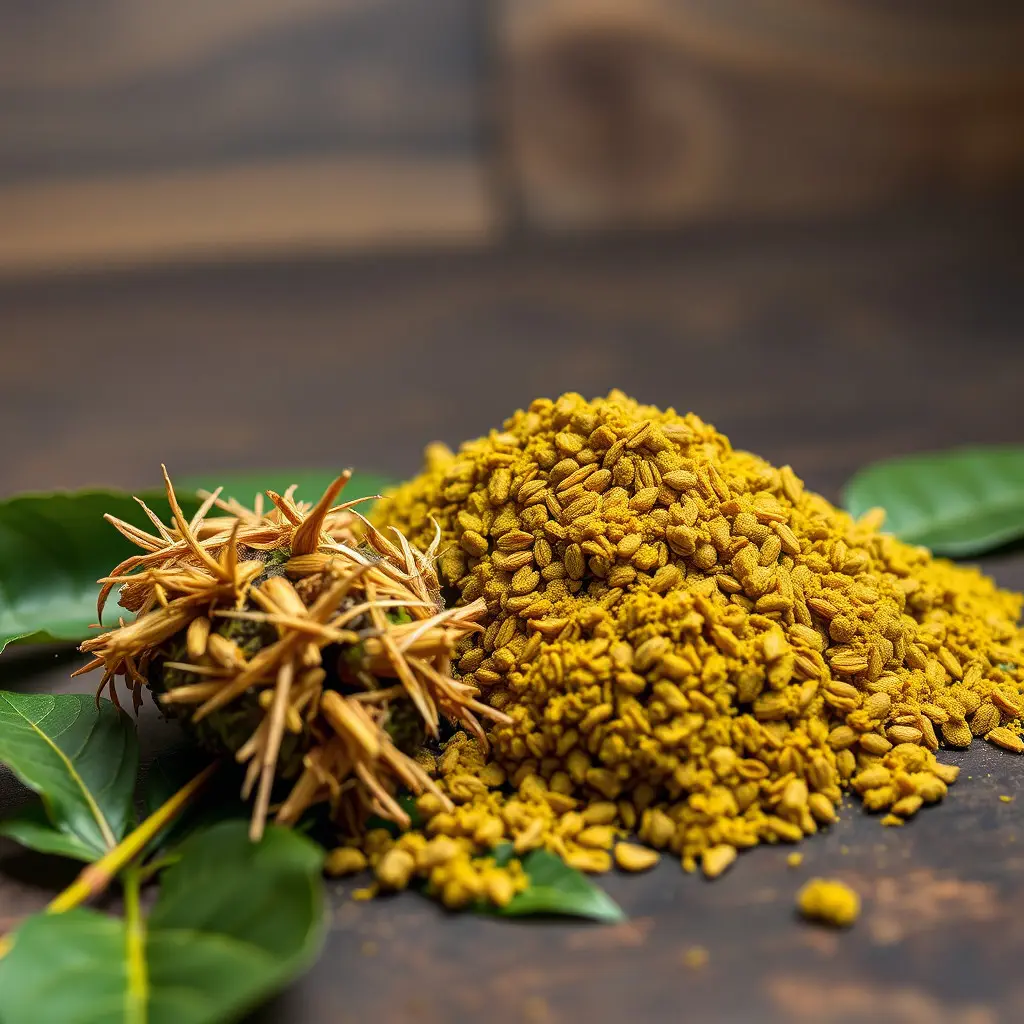Indiana residents are exploring kratom, a natural supplement derived from Mitragyna speciosa leaves, as an alternative for managing chronic pain. The primary alkaloids, mitragynine and 7-hydroxymitragynine, offer pain relief by binding to brain opioid receptors with less risk of addiction and overdose compared to traditional opioids. While some Hoosiers report improved quality of life and reduced pain levels after using kratom, it's crucial for users to exercise caution and stay informed on the evolving legal status of kratom in Indiana, which is currently under review due to legislative debates and potential federal regulations. Indiana-specific research supports kratom's efficacy as a safer alternative in pain management, though its full safety profile is still being studied by the scientific community. Users are advised to purchase kratom from reputable sources that comply with state regulations, monitor legal changes, and consult healthcare professionals for safe and informed use. As Indiana continues to evaluate the role of kratom in pain management, responsible usage remains a priority for those considering it as part of their holistic health strategy.
explore the multifaceted nature of chronic pain management, with a particular emphasis on the role of kratom in Indiana. This article delves into the scientific underpinnings of kratom’s analgesic effects, shedding light on how it can offer relief to those grappling with persistent discomfort. We will navigate the complex legal landscape surrounding kratom usage within Indiana, providing guidance on responsible use and the importance of its regulatory context. Join us as we unravel the potential benefits and challenges associated with kratom as a natural alternative for pain alleviation in the Hoosier State.
- Understanding Kratom's Role in Managing Chronic Pain: A Focus on Indiana Usage Patterns
- The Science Behind Kratom and Its Analgesic Properties
- Navigating Legalities and Responsible Use of Kratom in Indiana for Chronic Pain Relief
Understanding Kratom's Role in Managing Chronic Pain: A Focus on Indiana Usage Patterns

Kratom, derived from the leaves of Mitragyna speciosa, has garnered attention in Indiana as a potential alternative for managing chronic pain. The plant’s alkaloids, mitragynine and 7-hydroxymitragynine, interact with opioid receptors in the brain, offering analgesic effects without the high potency of prescription opioids. In Indiana, where chronic pain management remains a significant health concern, kratom’s role is under scrutiny and investigation. Preliminary studies and anecdotal evidence suggest that Indiana residents who use kratom report reduced pain levels and an improved quality of life. These reports are indicative of a broader trend in the state, where individuals are increasingly turning to this botanical supplement as part of a holistic approach to chronic pain. However, it is crucial for users to approach kratom with caution, understanding both its potential benefits and the lack of comprehensive clinical trials that would fully substantiate its efficacy and safety profile. As such, the Indiana usage patterns reflect a complex interplay between personal experience, scientific inquiry, and regulatory challenges.
The Science Behind Kratom and Its Analgesic Properties

Indiana kratom has been the subject of considerable scientific investigation, particularly concerning its analgesic properties. Mitragyn speciosa, the botanical name for kratom, contains a variety of alkaloids, including mitragynine and 7-hydroxymitragynine, which are believed to be responsible for its pain-relieving effects. These compounds interact with the body’s opioid receptors, providing relief from chronic pain without the same level of sedation or respiratory depression as traditional opioids. Research conducted in Indiana has contributed to a growing body of evidence suggesting that kratom may be an effective adjunct therapy for managing chronic pain conditions.
The analgesic effects of kratom are thought to stem from its agonistic activity at mu-opioid receptors, which are also the targets of many synthetic opioids. However, unlike the latter, kratom has a complex pharmacological profile that may offer a safer alternative for pain management. Studies have shown that kratom can alleviate chronic pain with fewer side effects and lower risks of addiction or overdose. This has significant implications for individuals who suffer from long-term pain and are seeking non-opioid solutions to avoid the risks associated with opioid use. The ongoing research into indiana kratom continues to shed light on its potential as a natural alternative in chronic pain management strategies.
Navigating Legalities and Responsible Use of Kratom in Indiana for Chronic Pain Relief

In Indiana, individuals seeking relief from chronic pain through natural alternatives often turn to kratom, a botanical supplement derived from the leaves of the Mitragyna speciosa tree. The legal status of kratom in the state is subject to change, as it has faced both support and scrutiny from legislators. As of the knowledge cutoff date, kratom is legal in Indiana, but its future may be influenced by federal regulations or new state legislation. It’s imperative for residents interested in using kratom for pain management to stay informed about the latest legal developments. The Indiana State Excise Police provide guidance on the sale and possession of kratom products, which can help users adhere to the law while exploring this option. Users must purchase kratom from reputable sources that comply with state regulations and offer transparent labeling regarding product potency and origin.
Responsible use of kratom for chronic pain relief in Indiana requires a nuanced approach that balances potential therapeutic benefits with legal compliance and personal health considerations. Users should consult with healthcare providers to understand how kratom may interact with other medications they are taking, as well as to assess the appropriateness of kratom for their individual health needs. Self-dosing without medical supervision can be risky, and it’s crucial to follow dosing recommendations from trusted sources when available. Additionally, individuals should be aware of the potential side effects and monitor their use for any adverse reactions. By staying informed on legal matters and practicing responsible usage, Indiana residents can safely consider kratom as a part of their holistic pain management strategy.
In conclusion, the exploration of kratom as a therapeutic option for managing chronic pain, particularly within the context of Indiana’s usage patterns, presents a multifaceted issue. The scientific evidence supporting its analgesic properties offers a promising avenue for those seeking relief. However, navigating the complex legal landscape surrounding kratom use in Indiana necessitates careful consideration and responsible consumption. As the discussion on kratom’s role in pain management continues to evolve, it is clear that ongoing research and regulatory oversight are crucial to optimize its benefits while ensuring patient safety. Stakeholders, including healthcare providers, policymakers, and affected individuals, must collaborate to develop guidelines and approaches that respect both the potential of kratom and the legal frameworks governing its use.






